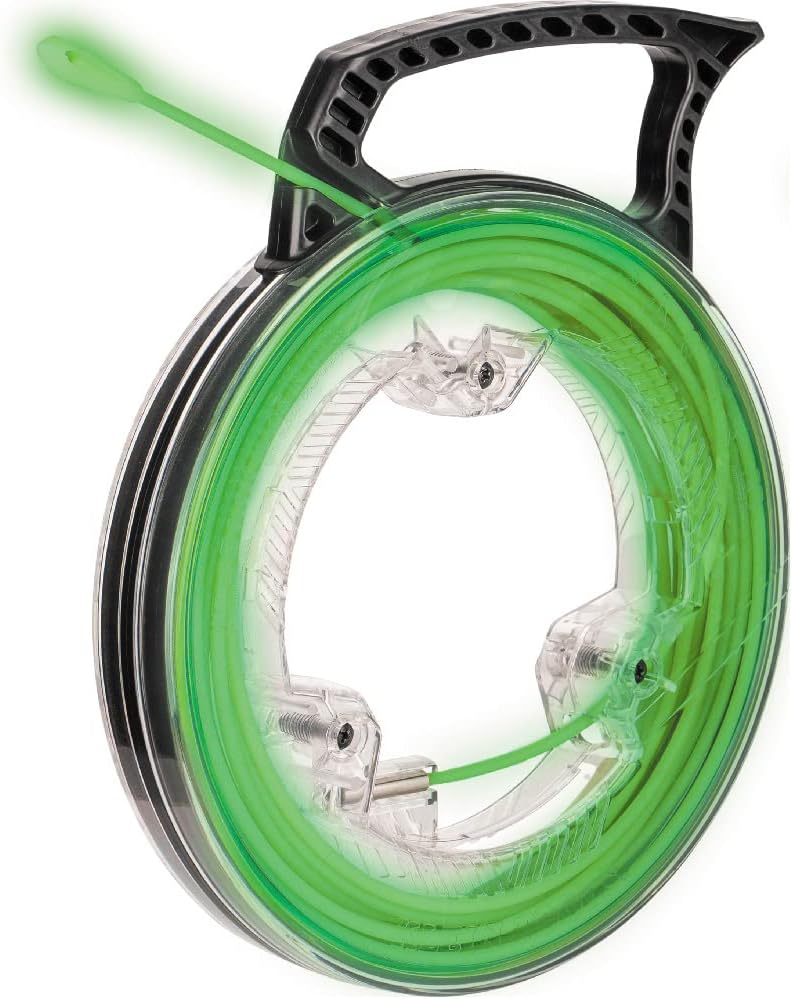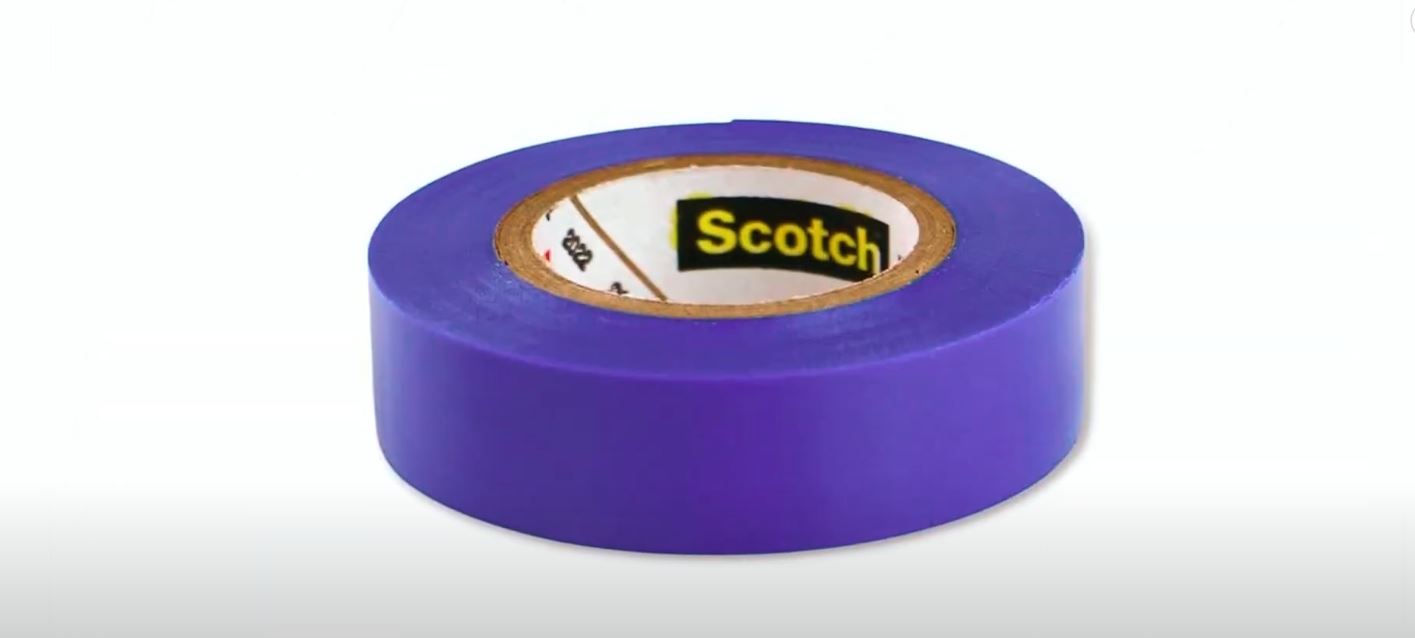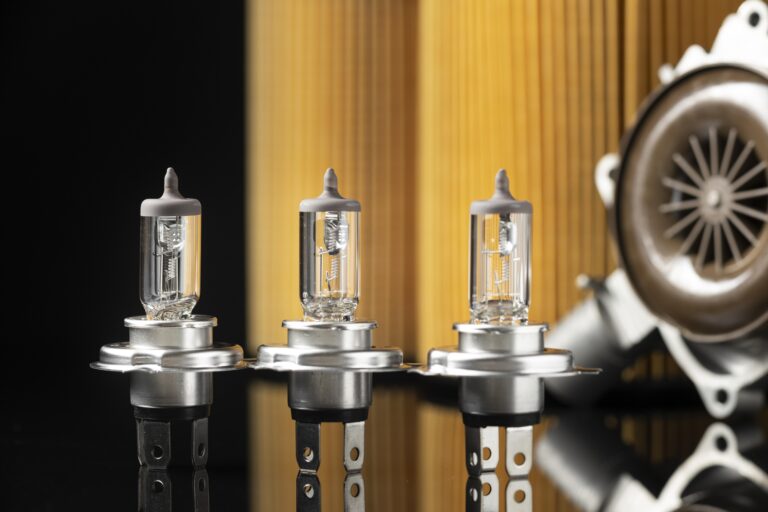5 Best Fish Tape for Pulling Electrical (2025 Guide)
It is the tool that allows you to cleanly and efficiently pull new wires for a ceiling fan, run a new data cable, or install a new outlet without tearing up walls or ceilings. This guide will provide a comprehensive look at what makes a fish tape essential, what key features to look for, and a preview of the top models available.
In the dynamic world of electrical work, the challenges are as varied as the projects themselves. One of the most common and often frustrating tasks is pulling wires through conduits, walls, and ceilings. Whether you’re a seasoned professional tackling a commercial building’s electrical system or a homeowner installing a new ceiling fan, trying to feed a wire through a series of bends, turns, and obstructions can quickly turn into a test of patience. The wire can snag, kink, and get stuck, leading to wasted time, damaged cables, and immense frustration.
This is where a high-quality fish tape becomes an indispensable tool. A fish tape is a long, flexible ribbon of material—often steel, fiberglass, or a polymer—that is designed to be fed through a conduit or enclosed space to create a path for a wire. It is the electrician’s secret weapon, the tool that transforms a difficult, two-person job into a quick, one-person task. This guide will take a deep dive into five of the best fish tapes on the market, exploring their unique features and helping you choose the perfect one for your specific needs.
1. Klein Tools Steel Fish Tape

For generations of electricians, the name Klein Tools has been synonymous with quality, reliability, and durability. Their steel fish tape is a testament to this legacy, serving as the gold standard for professionals who demand a rugged, no-nonsense tool that can handle the toughest jobs. It is the kind of tool that is passed down from one generation to the next, a true workhorse of the electrical trade.
Overview and Specs
Klein Tools’ steel fish tape is typically made from high-carbon spring steel, a material known for its exceptional durability and stiffness. This tape is available in a variety of lengths, with the 50-foot and 100-foot options being the most popular. The tape itself is a flat, coiled strip that is housed in a rugged, high-impact plastic case. The case features a smooth-running handle that makes it easy to feed the tape out and rewind it quickly. The end of the tape is equipped with a durable, non-conductive hook that is perfect for grabbing and pulling wires.
The key to its performance is the balance between the tape’s strength and its ability to bend without kinking. The high-carbon spring steel is stiff enough to be pushed through long, straight runs with minimal effort, yet flexible enough to navigate a few bends in a conduit. The case is designed for a comfortable, secure grip, reducing hand fatigue during long pulls. The rugged construction of the case and the durability of the steel tape ensure that this tool will withstand the abuse of a professional job site for many years.
Why It’s Popular Among Professionals
The Klein Tools steel fish tape is a staple in a professional electrician’s toolkit for several key reasons. First and foremost is its legendary durability. The high-carbon spring steel is incredibly tough and resists kinking, twisting, and breaking, even when pulling a heavy load of wires. This reliability means a professional can count on it to get the job done, every time.
Second, the tape’s stiffness is a major advantage for long pulls. It can be pushed through a conduit with very little sag, making it highly effective for both straight and moderately curved runs. This saves a tremendous amount of time and effort on a job, which is a major concern for any professional. While it is not the best choice for extremely tight, multiple-bend conduits, its performance on standard pulls is unmatched. Finally, the Klein Tools brand is backed by a long history of quality, giving professionals the confidence that they are using a tool that is built to last.
- Pros:
- Exceptional Durability: The high-carbon spring steel is incredibly strong and resistant to kinking and breaking.
- Excellent for Long Pulls: The tape’s stiffness makes it easy to push through long conduits with minimal effort.
- Professional Standard: It is a trusted, reliable tool that is the go-to for most professionals.
- Rugged Case: The durable plastic case is built to withstand the abuse of a job site.
- Cons:
- Conductive: Steel is a conductor of electricity, making it a safety risk around live wires.
- Less Flexible: It is not ideal for navigating multiple, very tight bends in a conduit.
2. Southwire SIMpull Fish Tape

In a world where speed and efficiency are key, Southwire’s SIMpull Fish Tape has emerged as a major player. It is a modern, non-conductive tape that is designed with a very specific purpose in mind: to reduce friction and eliminate snags, making every pull as smooth and effortless as possible. It represents a new generation of fish tapes that prioritize ease of use and cable protection.
Overview and Specs
The Southwire SIM pull Fish Tape is a non-conductive composite tape that is housed in a compact, ergonomic case. Its defining feature is its patented SIMpull technology, which is a low-friction polymer coating that is applied to the tape. This coating reduces the friction between the tape and the inside of the conduit, making it incredibly easy to feed and pull. The tape is available in a variety of lengths, with the 60-foot option being a popular choice for its versatility. The case features a unique handle design that provides a comfortable, secure grip and a smooth rewind mechanism.
The tape itself is highly flexible, making it ideal for navigating multiple bends in a conduit. The non-conductive material also adds a layer of safety, as it can be used in a conduit that may contain live wires. The tape’s end is fitted with a strong, flexible hook that can be easily bent to secure a wire.
Smooth Pulling Design for Fewer Snags
The magic of the Southwire SIMpull tape is in its low-friction design. The SIMpull coating allows the tape to glide through the conduit with minimal resistance, which is a huge advantage when pulling wires through long, congested, or curved runs. This smooth operation not only saves a great deal of effort but also reduces the risk of damaging the wire’s insulation. When a tape snags on an obstruction or a rough spot in the conduit, it can put a great deal of stress on the wire, which could lead to a break in the insulation and a dangerous short circuit. The Southwire tape’s design virtually eliminates this risk.
This low-friction design also means that the tape is less likely to get stuck, saving valuable time on the job. It is a perfect choice for electricians who often work with older conduits that may be corroded or have rough spots.
- Pros:
- Low-Friction Technology: The SIMpull coating makes pulling incredibly smooth and easy.
- Non-Conductive: Adds a layer of safety for working around live wires.
- Highly Flexible: Perfect for navigating multiple bends and turns in a conduit.
- Ergonomic Case: The comfortable handle and smooth rewind mechanism reduce hand fatigue.
- Cons:
- Less Rigid: It is not as stiff as a steel tape, making it harder to push through very long, straight runs.
- Durability: The non-conductive material is not as durable as high-carbon steel.
3. Gardner Bender Glow-in-the-Dark Fish Tape

When working in dark, unlit spaces like attics, basements, or enclosed wall cavities, visibility is a major concern. The Gardner Bender Glow-in-the-Dark Fish Tape is a clever, innovative solution to this problem. It takes a traditional tool and adds a feature that can be a game-changer in a low-light environment, making a difficult job much easier and safer.
Overview and Specs
The Gardner Bender Glow-in-the-Dark Fish Tape is a durable, non-conductive fiberglass tape that is coated with a luminous, glow-in-the-dark material. It is typically housed in a high-impact plastic case with a comfortable handle for easy winding and unwinding. The tape comes in a variety of lengths, making it a versatile tool for a range of jobs. The tape is stiff enough to be pushed through a conduit but flexible enough to handle a few bends. Its non-conductive nature makes it a safe option for working in environments where there is a risk of contact with electricity.
Ideal for Dark Areas and Tight Conduits
The primary advantage of the Gardner Bender tape is its glow-in-the-dark feature. In a dark attic, a cramped basement, or a wall cavity without a light source, it can be nearly impossible to see the end of a traditional fish tape. The glow-in-the-dark coating allows you to easily track the tape’s progress, which can save a tremendous amount of time and frustration. This is especially helpful when you are working on your own and need to pull the tape out of a small hole or junction box.
The glow-in-the-dark feature also adds a layer of safety. It allows you to see the tape and avoid stepping on it or getting tangled in it in a dark space. This innovative design makes it the perfect tool for any professional or DIYer who frequently works in low-light conditions.
- Pros:
- Glow-in-the-Dark: A unique feature that makes it ideal for use in dark, unlit spaces.
- Non-Conductive: The fiberglass material adds a layer of safety.
- Versatile: The tape’s design is suitable for a wide range of jobs.
- Cons:
- Less Rigid: It is not as stiff as a steel tape, so it is not ideal for very long, straight pulls.
- Durability: Fiberglass is less durable than high-carbon steel.
4. Greenlee Fiberglass Fish Tape

Greenlee is a name that is synonymous with professional-grade electrical tools. Their fiberglass fish tape is a testament to their commitment to quality and safety. It is a highly respected tool that offers a fantastic combination of strength, flexibility, and non-conductive properties, making it a great choice for a wide variety of electrical jobs.
Overview and Specs
The Greenlee fiberglass fish tape is a durable, non-conductive tape that is coated with a low-friction polymer. It is typically housed in a rugged, high-impact plastic case with an ergonomic handle for easy winding. The tape is available in a variety of lengths, with the 50-foot and 100-foot options being the most common. The fiberglass material is strong and flexible, making it ideal for navigating tight bends in a conduit. The tape is resistant to kinking and twisting and is a great choice for pulling wires in a variety of environments.
High Strength and Flexibility for Longer Pulls
The Greenlee fiberglass tape is a perfect example of a tool that balances strength and flexibility. The fiberglass material is strong enough to handle a heavy load of wires, yet it is flexible enough to navigate multiple bends in a conduit with ease. This makes it an ideal choice for longer pulls in complex environments.
The non-conductive nature of the tape is a major safety advantage, especially for a professional who may be working in a conduit with existing, live wires. The tape’s smooth polymer coating also reduces friction, making it easy to pull wires through a conduit with minimal effort. This tape is a reliable, high-quality tool that is trusted by professionals who value both safety and efficiency.
- Pros:
- Non-Conductive: The fiberglass material is a major safety advantage.
- Great Balance: Offers a perfect combination of strength and flexibility.
- Reliable Brand: Greenlee is a trusted name in the electrical trade.
- Resistant to Kinking: The durable material is less likely to kink or break.
- Cons:
- Less Rigid: It is not as stiff as a steel tape, so it is not ideal for very long, straight runs.
- Durability: The fiberglass material is not as durable as high-carbon steel.
5. Milwaukee Steel Fish Tape with Case

Milwaukee is a brand that is known for its rugged, durable, and ergonomic tools. Their steel fish tape is a perfect example of this philosophy. It is a professional-grade tool that combines the strength of steel with a user-friendly, ergonomic design, making it a fantastic choice for any electrician who values comfort and performance.
Overview and Specs
The Milwaukee steel fish tape is a high-carbon steel tape that is housed in a unique, ergonomic case. The case features a non-slip grip and a smooth, quick-rewind handle that reduces hand fatigue. The tape itself is made from a durable steel that is resistant to kinking and breaking. It is available in a variety of lengths, with the 50-foot and 100-foot options being the most common. The end of the tape is fitted with a durable, flexible hook that can be easily bent to secure a wire.
Rugged Design and Ergonomic Handling

The Milwaukee tape’s primary advantage is its ergonomic design. The case is built for comfort, with a non-slip grip that ensures a secure hold, even in a sweaty or dirty environment. The handle is designed to reduce hand fatigue, making it a great choice for long pulls. The smooth, quick-rewind mechanism also saves a great deal of time and effort on the job.
The tape’s steel construction provides the necessary strength and rigidity for a long, straight pull. While it is not a non-conductive tape, it is a very durable and reliable tool that is perfect for professional use. The Milwaukee brand is known for its ruggedness, and this tape is no exception. It is built to withstand the abuse of a professional job site and will provide years of reliable service.
- Pros:
- Ergonomic Design: The case is built for comfort and reduces hand fatigue.
- Rugged Construction: The steel tape and durable case are built to last.
- Smooth Rewind: The smooth rewind mechanism saves a great deal of time and effort.
- Durable: The steel tape is incredibly strong and resistant to kinking and breaking.
- Cons:
- Conductive: Steel is a conductor of electricity, making it a safety risk around live wires.
- Less Flexible: It is not as flexible as a fiberglass or nylon tape, so it is not ideal for very tight bends.
Comparison Table: Best Fish Tape for Electrical Work
Benefits of Using Quality Fish Tape
Saves Time and Effort in Wire Pulling
The single biggest benefit of using a high-quality fish tape is the time and effort it saves. Trying to push a stiff electrical wire through a conduit can be a slow, painstaking, and often painful process. The wire can snag on every turn, and the friction can make it impossible to move. A good fish tape, with its smooth, low-friction design and flexible body, can navigate a conduit in a matter of seconds. This allows you to pull the wire quickly and efficiently, turning a half-hour job into a 10-minute task.
Reduces Risk of Damaging Cables
When a wire gets stuck in a conduit, the natural reaction is to pull harder. This can put a great deal of stress on the wire, which can cause the insulation to stretch, crack, or even tear. A damaged wire is a fire hazard and a potential safety risk. A quality fish tape, with its smooth, low-friction design, eliminates this risk. The tape glides through the conduit, and the wire follows smoothly, which ensures that the wire’s insulation remains intact.
Works Across Different Environments (Home, Commercial, Industrial)
A good fish tape is a versatile tool that can be used in a variety of environments. A fiberglass or nylon tape is perfect for a homeowner who is working on a simple project in a wall cavity, while a heavy-duty steel tape is a must-have for a professional who is pulling wires in a commercial or industrial setting. No matter the job, a fish tape is an essential tool that can make a difficult task much easier.
What is Fish Tape?
At its core, a fish tape is a long, flexible strip of metal or non-conductive material.2 It is typically wound inside a case for easy storage and unwinding.3 The name “fish tape” is a perfect description of its function: it is used to “fish” through a space, from one end to the other, to create a path for a wire to be pulled back through.
Definition and Purpose
A fish tape is a professional-grade tool designed to assist in the installation of electrical or data cables.4 Its primary purpose is to pull wires through conduits, cable runs, and enclosed spaces such as wall cavities and ceilings. The tape is fed into the conduit or space until it emerges from the other end. The electrical wires are then attached to the end of the tape, and the tape is pulled back, effortlessly pulling the wires along with it.5
Without a fish tape, pulling wires through curved conduits or long, straight runs would be a monumental task, often leading to kinking, friction, and damage to the wire’s insulation. The tape acts as a strong, thin guide that eliminates this friction, allowing for a smooth and efficient pull.
How it helps in pulling electrical wires
The process of using a fish tape is a model of efficiency.6 Here is how it simplifies a complex task:
- Feeding the Path: The electrician feeds the tape from one end of the conduit or wall until it emerges from the other side. The flexible nature of the tape allows it to navigate tight corners and existing wiring with ease, a task that would be impossible for a stiff electrical wire.
- Attaching the Wires: Once the tape is at the destination, the electrical wires are attached to the end of the tape. This is usually done by bending the wire ends around the tape’s hook, which is a key feature of most models.
- Pulling the Wires: The electrician then begins to pull the tape back, and the wires follow smoothly through the conduit. The fish tape absorbs the friction and tension, protecting the wires from damage.
This simple process saves an enormous amount of time and effort, preventing the common frustrations of tangled wires and damaged insulation.
Common Applications
The versatility of a fish tape makes it an essential tool for a wide range of wiring projects. Its applications are not limited to just conduits; it is used in a variety of enclosed spaces.
- Running Wires Through Conduit: This is the most common use. Whether it’s a new installation or an old run, a fish tape is the ideal tool for pulling wires through PVC, EMT, and other types of conduits.7
- Installing Wires in Walls: For a homeowner looking to add a new outlet or a data cable to a room, a fish tape can be used to feed a wire through the hollow space in a wall cavity, saving a great deal of time and effort.
- Pulling Wires in Ceilings and Attics: Dropping wires from the attic to a wall switch or a light fixture is made simple with a fish tape.8 It allows you to feed a wire down through the ceiling and into the wall without tearing up drywall.
Connecting Wires to Junction Boxes: A fish tape can be used to pull wires through a wall and out of a small junction box opening.9
Choosing the right fish tape requires more than just picking a brand. You need to consider a number of critical features that will determine its effectiveness for your specific needs. The material, length, durability, and even the design of the case can make a significant difference in the performance of the tool.
Length options (25ft, 50ft, 100ft, etc.)
Fish tapes come in a variety of lengths, and choosing the right one is a key part of your decision.
- 25ft: This is a great choice for small-scale residential projects, such as pulling a wire through a short conduit run or in a small wall cavity. Its compact size makes it lightweight and easy to handle.
- 50ft: This is the most common and versatile length, suitable for a wide range of jobs from residential to light commercial. It’s long enough for most wall and ceiling runs but still manageable for everyday use.
- 100ft and longer: These tapes are designed for professional and commercial applications, such as pulling wires through long, straight runs in large buildings.10 They are heavier and require more effort to manage, but they are essential for large-scale jobs.The trade-off is between length and manageability. A longer tape can handle more jobs, but a shorter one is more portable and easier to use on small jobs.
Material: steel, fiberglass, nylon
The material of the fish tape is perhaps the most important factor to consider, as it dictates the tape’s flexibility, durability, and, most importantly, its safety.
- Steel: This is the traditional and most common material.11 Steel tapes are incredibly durable and stiff, making them a great choice for pulling wires through long, straight, and rigid metal conduits.12 Their stiffness allows them to be pushed through a conduit with little to no resistance. However, steel is a conductor of electricity.13 This means you should never use a steel fish tape on a conduit that contains live wires.
Fiberglass: Fiberglass fish tapes are a safer, non-conductive alternative to steel.14 They are a good choice for situations where there is a risk of contact with live wires. Fiberglass tapes are also more flexible than steel, allowing them to navigate more bends and turns. They are often covered with a plastic or polymer coating for added protection and to reduce friction.15
Nylon/Polymer: These are the most modern and flexible fish tapes. They are lightweight, non-conductive, and highly flexible, making them ideal for navigating multiple bends in a conduit or for pulling wires through cluttered wall cavities.16 Their lower stiffness means they are not ideal for very long, straight pulls, but their ease of use in a complex environment is unmatched.Durability and flexibilityDurability and flexibility are two characteristics that are often at odds with each other. A tape needs to be durable enough to withstand the tension of a wire pull without breaking, but it also needs to be flexible enough to navigate tight turns.17 The best manufacturers have found a balance between these two qualities. A durable tape will not kink, bend, or snap under pressure. A flexible one will glide through complex pathways without getting stuck.
Grip and ease of rewinding
The design of the tape’s case and handle is not just an afterthought—it’s a critical feature that impacts the user’s experience. A good fish tape will have an ergonomic handle that provides a firm, comfortable grip, preventing hand fatigue on long jobs.18 The rewinding mechanism should be smooth and quick, allowing the tape to be retracted without kinking or getting tangled. Look for features like a non-slip grip and a smooth feed-out mechanism that make the tape easy to handle and control.
Our Top Picks at a Glance
- Klein Tools 56005 Fish Tape: A heavy-duty, durable steel tape that is the gold standard for professionals.19
- Greenlee 438-500 Fish Tape: A high-quality fiberglass tape known for its safety and flexibility in navigating complex conduits.
- Southwire SIMpull Fish Tape: A modern, non-conductive tape with a very low-friction coating for easy pulls.20
- Ideal Fish Tape: A classic, reliable choice that offers a great balance of durability and a user-friendly design.21
- Klein Tools 56004 Fish Tape: A lightweight, nylon tape perfect for small residential and commercial jobs.






